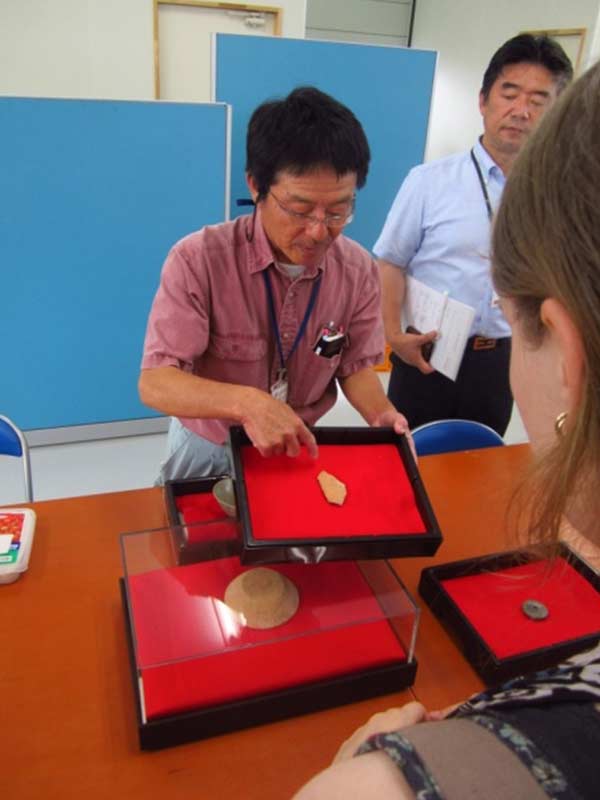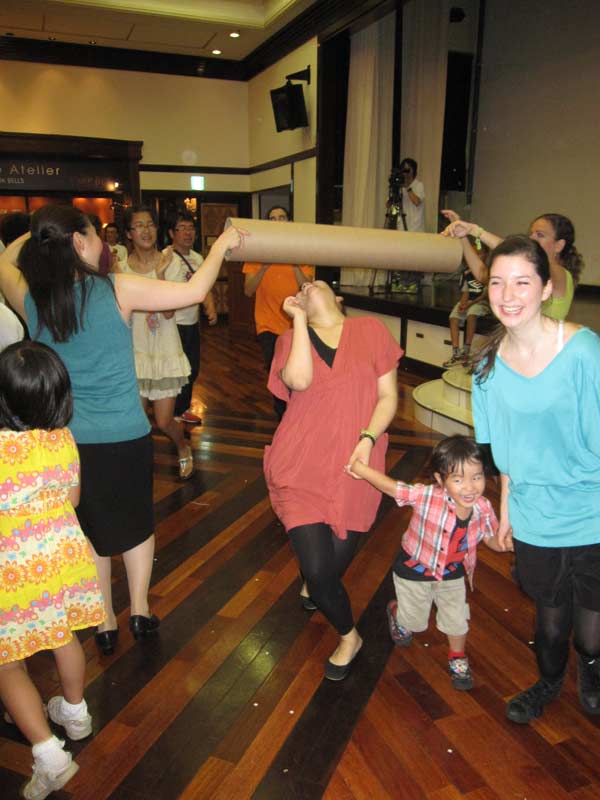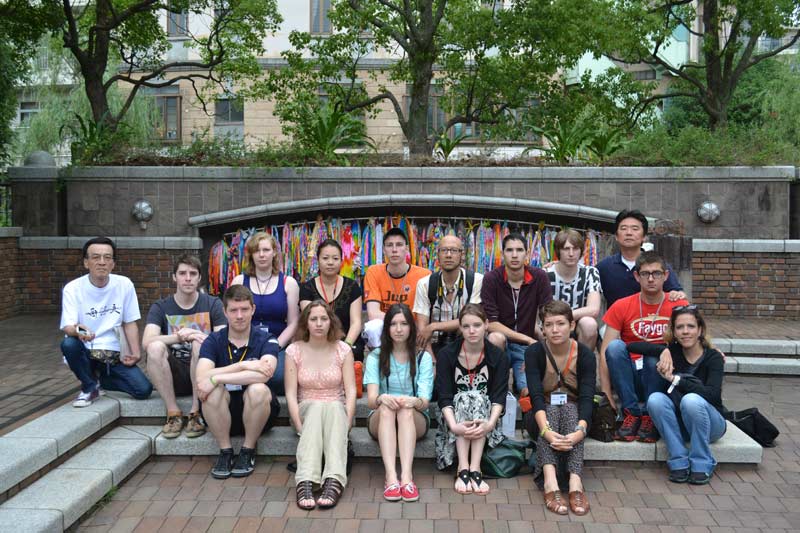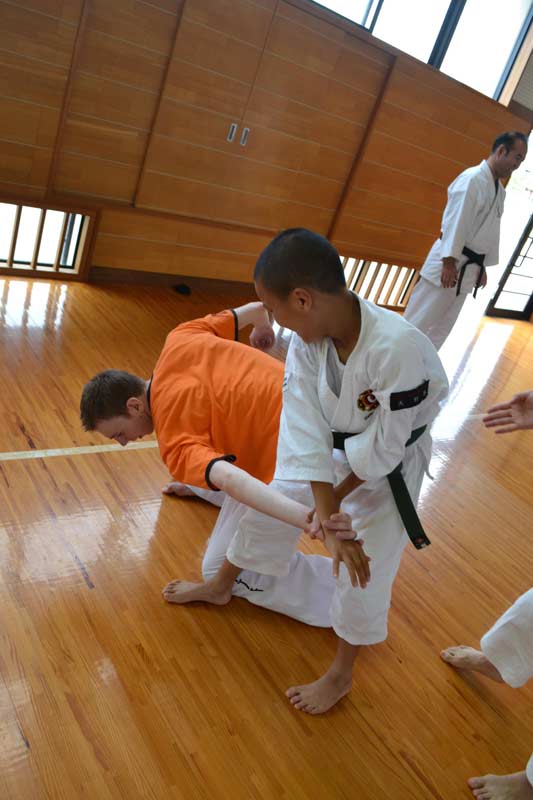Our visit to Takematsu was my favorite activity from week 1 in Omura. We were greeted at the school by the principal before students welcomed us with perdonal cards and placemats. I spent the day woth some of the 2nd grade students. They were excited to see us foreigners, even though we didin’t speak much Japanese! We got the chance to attend swimming class, which was a great way to cool off. However, my favorite class that day was music. We played games (rock, paper scissors) with the students. We sang B-I-N-G-O in two languages (both Japanese and English), and head-shoulders-knees-and-toes in four (Japanese, English, Norwegian and Danish)!
Lunch was an experience! The food was prepared in a kitchen, bit it was served our by students and eaten in the classroom. Finally, we held a music event with all the 5th and 6th graders, which was a lot, considering Takematsu elementary had more than a 1000 students. We performed some popular Japanese dances for them and also played some games. They were so excited to have us there, we felt like rock stars, especially when we gave high-fives to every student there! Overall it was an excellent experience for everyone involved as we got to learn about many other cultures.
Kayla (USA)










